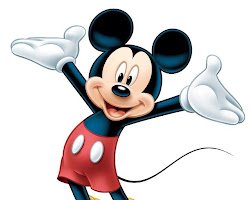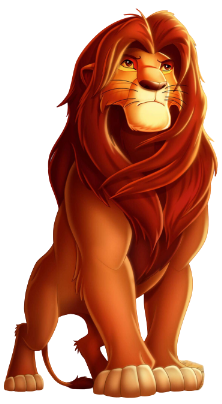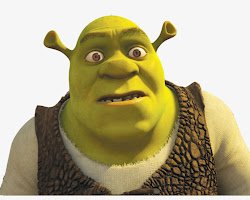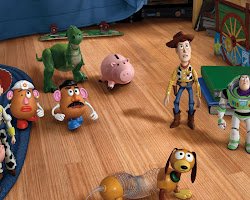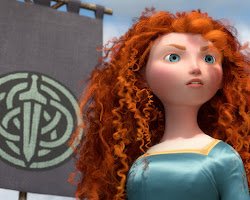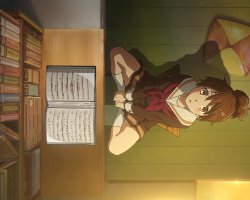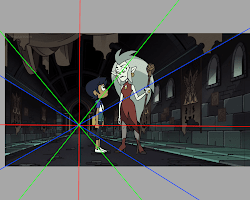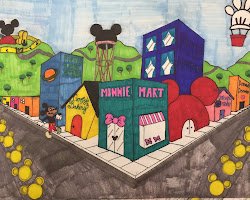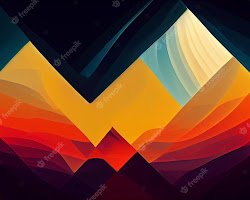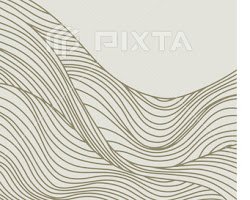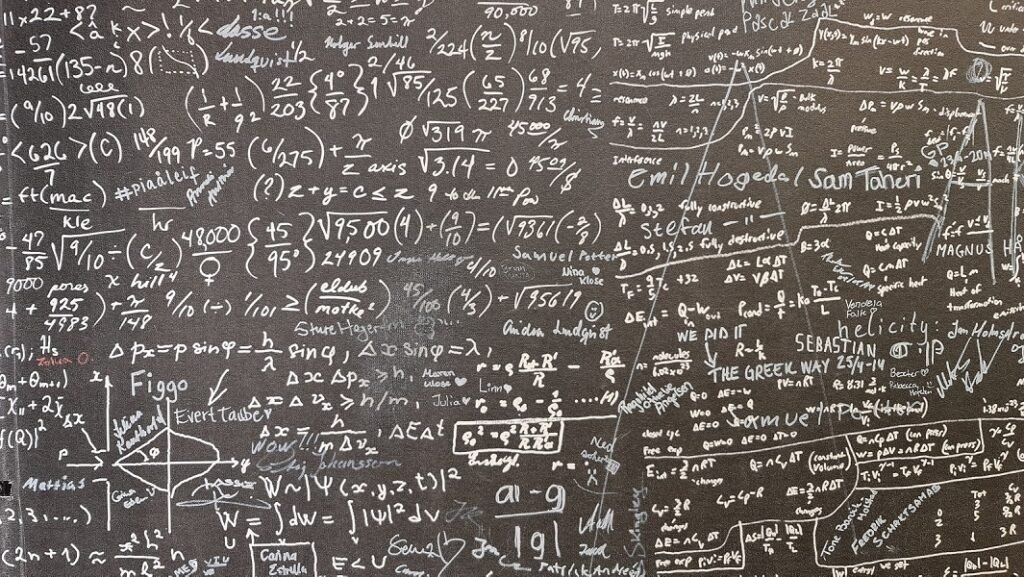Animation is a magical art form that brings characters and stories to life. But what many people don’t realize is that geometry plays a pivotal role in creating the vibrant animated movies we adore.
Shapes Tell Tales: Geometry Animation in Character Design
The human mind is hardwired to recognize patterns. This is why we find comfort in symmetry and balance, and why we’re drawn to shapes that are familiar and predictable. In the world of animation, geometric shapes are often used as the building blocks for characters. By carefully choosing the right shapes, animators can create characters that are both visually appealing and emotionally resonant.
The Basic Shapes
The most common geometric shapes used in character design are circles, squares, triangles, and rectangles. Each of these shapes has its own unique set of connotations.
- Circles are often associated with positive qualities such as innocence, purity, and vulnerability. They can also be seen as symbols of wholeness and completeness.
- Squares are associated with stability, strength, and order. They can also be seen as symbols of power and authority.
- Triangles are associated with action, energy, and determination. They can also be seen as symbols of aggression and danger.
- Rectangles are associated with practicality, efficiency, and reliability. They can also be seen as symbols of stability and security.
How Shapes Influence Character Personality
The shapes used in character design can have a significant impact on the character’s personality. For example, a character with a round face and soft features is likely to be seen as kind and gentle, while a character with a square jaw and sharp features is likely to be seen as strong and assertive.
Some examples of how geometric shapes are used to influence character personality:
Mickey Mouse is a classic example of a character whose design is based on simple geometric shapes. His round head, big ears, and small body all contribute to his image as a friendly and approachable character.
Donald Duck, on the other hand, is a more complex character. His triangular beak and webbed feet give him a more aggressive appearance, which is in keeping with his hot-tempered personality.
The Incredibles family is a good example of how different shapes can be used to create characters with different personalities. Mr. Incredible is a square-jawed superhero with a strong build, while Elastigirl is a curvy and graceful character. Their daughter, Violet, has a triangular face and a shy personality, while their son, Dash, has a rectangular body and a mischievous personality.
The Psychology of Shapes in Animation
Shapes are a fundamental element of animation, and they can be used to communicate a wide range of emotions, ideas, and messages. The way that we perceive shapes is influenced by our culture, experiences, and personal preferences. However, there are also some universal principles that govern the psychology of shapes.
One of the most important principles of the psychology of shapes is that they can evoke different emotions in people. For example, circles are often associated with positive emotions such as happiness, love, and security. This is because circles are symmetrical and smooth, which are qualities that we associate with safety and comfort. Triangles, on the other hand, are often associated with negative emotions such as fear, danger, and aggression. This is because triangles have sharp points and edges, which are qualities that we associate with danger and threat.
The shapes that we use to create characters can also have a subconscious impact on the viewer. For example, studies have shown that people are more likely to trust characters that are based on circles. This is because circles are associated with positive emotions such as happiness and love. In contrast, characters that are based on triangles are often perceived as being more aggressive and untrustworthy.
The psychology of shapes can also be used to create visual interest and excitement in animation. For example, the use of contrasting shapes can create a sense of dynamism and movement. The use of repeating shapes can create a sense of rhythm and pattern. And the use of negative space can create a sense of mystery and intrigue.
By understanding the psychology of shapes, animators can create characters and scenes that are more engaging and emotionally resonant. They can also use shapes to create visual interest and excitement in their work.
The Shape of Trust
The shape of a character can have a subconscious impact on the viewer’s perception of that character. For example, studies have shown that people are more likely to trust characters that are based on circles. This is because circles are associated with positive emotions such as happiness and love. In contrast, characters that are based on triangles are often perceived as being more aggressive and untrustworthy.
There are a few reasons why circles are associated with trust. First, circles are symmetrical, which is a quality that we associate with stability and reliability. Second, circles are smooth, which is a quality that we associate with softness and gentleness. Third, circles are often associated with nature, which is a source of comfort and security for many people.
Triangles, on the other hand, are often associated with danger and aggression. This is because triangles have sharp points and edges, which are qualities that we associate with pain and injury. Additionally, triangles are often associated with conflict and competition.
Of course, the shape of a character is not the only factor that influences the viewer’s perception of that character. Other factors, such as the character’s facial expression, body language, and actions, can also play a role. However, the shape of a character can be a powerful tool that can be used to create characters that are more engaging and emotionally resonant.
Activity: Analyze Famous Animated Characters
Here is an activity that you can do to explore how geometric shapes influence character personality:
- Choose three famous animated characters.
- Identify the geometric shapes that are used in their design.
- Consider how these shapes contribute to the characters’ personalities.
- Write a short paragraph about each character, describing their personality and how it is reflected in their design.
Here are some examples of famous animated characters that you could choose:
Woody from Toy Story
Square jaw, rectangular body. These shapes make him look sturdy and reliable.
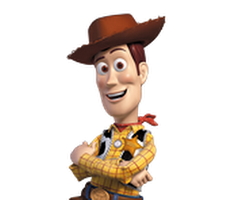
geometric animation Square jaw
Mickey Mouse
Round head, big ears, oval body. These shapes make him look friendly and approachable.
Elsa
Oval face, long, flowing hair. These shapes make her look graceful and elegant.
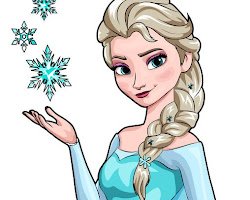
Elsa cool math art geometric animation
Simba from The Lion King
Geometric shapes are a powerful tool that can be used to create characters that are both visually appealing and emotionally resonant. By carefully choosing the right shapes, animators can create characters that will stay with us long after the credits have rolled.
Math of Animated Movement
Animation is the art of creating the illusion of motion by displaying a sequence of images in rapid succession. The mathematical principles behind animation can be complex, but they are essential for creating realistic and fluid movements.
Motion Blur
One of the most important mathematical concepts in animation is motion blur. Motion blur is the effect that occurs when an object is moving quickly and the camera captures multiple images of it in a short period of time. This creates the illusion of a smooth, continuous movement.
The motion blur equation is a mathematical formula that describes how motion blur is created. The equation takes into account the speed of the object, the distance between the object and the camera, and the shutter speed of the camera.
Inverse Kinematics
Another important mathematical concept in animation is inverse kinematics. Inverse kinematics is the process of calculating the position of a bone or joint in a skeleton based on the positions of the other bones or joints. This is used to create realistic movements, such as walking or running.
Inverse kinematics is also used to create morphing, which is the process of blending between two or more different shapes. This is often used to create special effects, such as a character turning into a monster.
The Use of Patterns in Animation
In addition to the mathematical principles mentioned above, patterns can also be used to create realistic and fluid animations. Patterns can be used to create the illusion of movement, such as the swaying of trees or the flapping of wings. They can also be used to create the illusion of texture, such as the fur of an animal or the scales of a fish.
One way to use patterns in animation is to create tweens. Tweens are in-between frames that are created by interpolating between two key frames. This can be used to create smooth, continuous movements.
Another way to use patterns in animation is to create motion graphics. Motion graphics are animations that use text, shapes, and other elements to create visual effects. Motion graphics are often used in advertising and marketing.
Activity: Creating a Flipbook Animation
To learn more about the math of animated movement, try creating a flipbook animation using basic pattern techniques. A flipbook is a simple animation that is created by drawing a series of images on a piece of paper. The images are then stacked together and flipped through quickly to create the illusion of motion.
To create a flipbook animation, you will need:
- A piece of paper
- A pencil
- A ruler
- A pen
Start by drawing a simple shape, such as a square or a circle. Then, draw a second shape that is slightly different from the first shape. Continue drawing shapes that are slightly different from each other until you have created a sequence of images.
Once you have created a sequence of images, stack them together and flip through them quickly. You should see the illusion of motion.
You can experiment with different patterns and shapes to create different effects. You can also add color to your flipbook animation.
Symmetry and Balance in Character Design
Symmetry and balance are two fundamental concepts in character design. Symmetry refers to the exact mirroring of one side of an object or image to the other. Balance, on the other hand, refers to the distribution of weight or visual elements in a composition.
When used effectively, symmetry and balance can help to create characters that are visually appealing, believable, and memorable.
Symmetrical Characters
Symmetrical characters are those that have features that are mirrored on either side of their bodies. This can include the face, body, limbs, and even clothing. Symmetrical characters are often seen as being more attractive and appealing than asymmetrical characters. This is because symmetry is associated with beauty and perfection in many cultures.
Symmetrical characters can also be easier to animate. This is because the animator can focus on animating one side of the character and then mirror the animation on the other side. This can save time and effort, and it can also help to create a more fluid and realistic animation.
However, symmetrical characters can also be seen as being boring or predictable. This is because they lack the visual interest that comes from asymmetry. Additionally, symmetrical characters can be difficult to make stand out from other characters in a scene.
Asymmetrical Characters
Asymmetrical characters are those that do not have features that are mirrored on either side of their bodies. This can include the face, body, limbs, and even clothing. Asymmetrical characters are often seen as being more interesting and unique than symmetrical characters. This is because asymmetry is associated with creativity and individuality.
Asymmetrical characters can also be more challenging to animate. This is because the animator must carefully consider the way that each side of the character moves. However, the challenge of animating an asymmetrical character can also be a rewarding experience.
When done well, asymmetrical characters can be incredibly expressive and memorable. They can also help to create a more visually interesting and dynamic scene.
Using Symmetry and Balance in Animation
Symmetry and balance can be used in a variety of ways in animation. They can be used to create characters that are visually appealing, believable, and memorable. They can also be used to create a sense of movement and flow in a scene.
Tips for using symmetry and balance in animation:
- Use symmetry to create characters that are symmetrical. This can help to make them look more attractive and appealing.
- Use asymmetry to create characters that are asymmetrical. This can help to make them look more interesting and unique.
- Use balance to distribute the weight or visual elements in a composition. This can help to create a sense of stability and harmony in a scene.
- Use symmetry and asymmetry in combination. This can help to create characters that are both visually appealing and interesting.
Activity: Designing an Animated Character with Symmetrical and Asymmetrical Features
Here is an activity that you can do to practice using symmetry and balance in animation:
- Choose a character that you would like to design.
- Decide on the features that you want to be symmetrical and asymmetrical.
- Sketch out the character’s design, paying attention to the symmetry and balance of the features.
- Animate the character, paying attention to the way that the symmetrical and asymmetrical features move.
Several examples of characters that have symmetrical and asymmetrical features:
- The Disney character Snow White has symmetrical features, such as her face and body. However, her hair is asymmetrical, with one side being longer than the other.
- The Pixar character Woody has asymmetrical features, such as his nose and eyes. However, his overall body shape is symmetrical.
- The anime character Naruto has asymmetrical features, such as his eyes and hair. However, his overall body shape is symmetrical.
Camera Shots and Perspectives for Geometry Animation
Geometry plays an important role in animation, from the way characters are drawn to the way camera shots are framed. In this section, we will explore the basics of camera angles and perspectives, and how they can be used to create depth and dimension in animation.
Camera Angles
The camera angle is the position of the camera relative to the subject being animated. Different camera angles can create different effects, such as:
Eye-level shot
This is the most common camera angle, and it gives the viewer a neutral perspective.
High-angle shot
This camera angle is positioned above the subject, and it can make the subject appear smaller and less powerful.
Low-angle shot
This camera angle is positioned below the subject, and it can make the subject appear larger and more powerful.
Overhead shot
This camera angle is positioned directly above the subject, and it gives the viewer a bird’s-eye view.
Tilted shot
This camera angle is tilted to one side, and it can create a sense of disorientation or suspense.
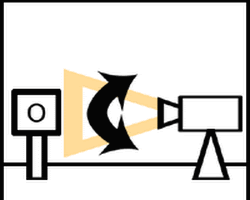
Cool math art Tilted shot in animation
Perspectives
Perspective is the way that depth is created in a two-dimensional image. There are two main types of perspective:
One-point perspective
This is the most common type of perspective, and it uses a single vanishing point to create the illusion of depth.
Two-point perspective
This type of perspective uses two vanishing points to create the illusion of depth.
Perspective can be used to create a sense of realism in animation, or it can be used to create more stylized or abstract effects.
Activity: Experimenting with Camera Angles
To get a better understanding of how camera angles can affect the mood and tone of an animated scene, try the following activity:
- Create a simple animation of a character walking across a room.
- Use different camera angles to shoot the animation.
- Pay attention to how the different camera angles affect the way the character looks and feels.
- Write down your observations.
Once you have completed the activity, discuss your observations with your classmates or friends. What did you learn about the relationship between camera angles and mood?
Geometry Animation in Landscapes
Geometry Animation is the study of shapes and their properties. It is a fundamental branch of mathematics that has applications in many fields, including art, architecture, engineering, and computer science.
In the field of animation, geometry is used to create realistic and visually appealing landscapes. By understanding the principles of geometry, animators can create landscapes that are both aesthetically pleasing and functional.
Geometric Animation Elements in Landscapes
There are many different geometric elements that can be used to create landscapes. Some of the most common elements include:
Triangles
Triangles are strong and stable shapes that can be used to create a sense of depth and perspective in a landscape.
Circles
Circles are graceful and flowing shapes that can be used to create a sense of movement and rhythm in a landscape.
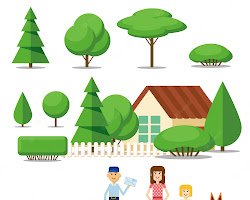
Circle geometric animation element
Squares
Squares are simple and regular shapes that can be used to create a sense of order and stability in a landscape.
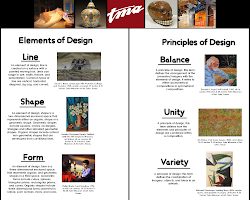
Square geometric animation element
Rectangles
Rectangles are versatile shapes that can be used to create a variety of effects in a landscape.
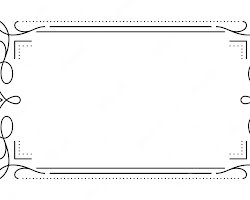
Rectangle geometric animation element
Lines
Lines can be used to create a sense of direction and movement in a landscape. They can also be used to divide the landscape into different areas.
Curves
Curves can be used to create a sense of softness and fluidity in a landscape. They can also be used to add interest and variety to the landscape.
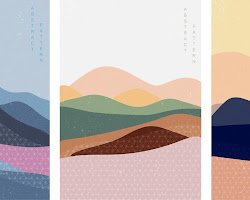
Curve geometric animation element
How Geometry Shapes the Environment
Geometry can be used to shape the environment in a variety of ways. For example, it can be used to create:
- Balanced and symmetrical designs: Geometric shapes are often used to create balanced and symmetrical designs in landscapes. This can be seen in the gardens of Versailles, which are famous for their geometric layout.
- Focal points: Geometric shapes can also be used to create focal points in a landscape. This can be done by placing a geometric object, such as a fountain or a statue, in a strategic location.
- Paths and walkways: Geometric shapes can also be used to create paths and walkways in a landscape. This can help to guide the viewer’s eye through the space and create a sense of order.
- Water features: Geometric shapes can also be used to create water features in a landscape. This can be seen in the fountains of Rome, which are famous for their intricate geometric designs.
- Natural features: Geometric shapes can also be found in natural landscapes. For example, the branching pattern of a tree can be seen as a fractal, which is a type of self-similar geometric shape.
How Geometry Enhances Storytelling
Geometry can also be used to enhance storytelling in animation. For example, the use of geometric shapes can help to create a sense of mood or atmosphere; sharp angles and diagonal lines can create a sense of tension or excitement, while smooth curves and rounded shapes can create a sense of calm or serenity.
Geometry can also be used to create visual symbolism. For example, the use of triangles can often be seen as a symbol of power or strength, while circles can often be seen as a symbol of unity or wholeness.
Finally, geometry can be used to create visual interest and excitement. For example, the use of unexpected geometric shapes or patterns can help to draw the viewer’s attention and create a sense of surprise.
Activity: Design an Imaginative Animated Landscape Using Geometric Elements
To get a better understanding of how geometry can be used to create animated landscapes, try this activity:
- Choose a few geometric elements that you want to use in your landscape.
- Sketch out a basic layout for your landscape, using the geometric elements that you chose.
- Add details to your landscape, such as trees, buildings, and people.
- Experiment with different ways to use the geometric elements to create a sense of depth, perspective, and movement in your landscape.
- When you are finished, share your landscape with others and explain how you used geometry to create it.
Math,Morphing and Metamorphosis
Morphing and metamorphosis are two techniques that are used to create the illusion of one object changing into another. Morphing is a gradual transformation, while metamorphosis is a more sudden and dramatic change. Both techniques can be used to create stunning visual effects, and they are often used in animation, film, and video games.
The Math of Morphing and Metamorphosis
The math behind morphing and metamorphosis is based on geometric transformations. A geometric transformation is a mathematical operation that changes the shape or position of a geometric object. Some common geometric transformations include translation, rotation, scaling, and shearing.
To create a morphing effect, two or more geometric objects are first aligned. Then, a series of geometric transformations are applied to one of the objects to gradually change its shape or position. The other object remains unchanged. The result is the illusion of one object changing into another.
To create a metamorphosis effect, two or more geometric objects are first aligned. Then, a single geometric transformation is applied to both objects. The result is the sudden and dramatic change of one object into another.
Creating a Simple Character Transformation Animation
To create a simple character transformation animation, you can use a software program such as Adobe After Effects or Blender. These programs allow you to create and apply geometric transformations to images and objects.
To start, you will need to create two images of the same character. The images should be of the same size and resolution. Then, you will need to align the two images so that the character is in the same position in both images.
Once the images are aligned, you can start applying geometric transformations to one of the images. You can use translation, rotation, scaling, or shearing to change the shape or position of the character.
As you apply the geometric transformations, you will need to keep an eye on the result. You want to make sure that the transformation is gradual and that the character’s shape and proportions are still recognizable.
Once you are satisfied with the transformation, you can export the animation as a video file. You can then share the animation with others or use it in your own projects.
With a basic understanding of geometric transformations, you can create your own morphing and metamorphosis animations. These animations can be used to create educational content, entertainment, or even art.
Activity: Create a Simple Character Transformation Animation
Here is an activity that you can do to practice the concepts of morphing and metamorphosis:
- Find two images of the same character. The images should be of the same size and resolution.
- Align the two images so that the character is in the same position in both images.
- Use a software program such as Adobe After Effects or Blender to apply geometric transformations to one of the images. You can use translation, rotation, scaling, or shearing to change the shape or position of the character.
- As you apply the geometric transformations, keep an eye on the result. You want to make sure that the transformation is gradual and that the character’s shape and proportions are still recognizable.
- Once you are satisfied with the transformation, export the animation as a video file.
This activity is a great way to learn the basics of morphing and metamorphosis. It is also a fun way to create your own animated characters.
In addition to the geometric transformations mentioned above, there are a number of other mathematical techniques that can be used to create morphing and metamorphosis effects. These techniques include:
- Blending: This technique combines two or more images or objects to create a new image or object.
- Interpolation: This technique estimates the value of a function at a point between two known points.
- Fractals: These are geometric objects that are self-similar, meaning that they can be divided into smaller copies of themselves.
The choice of which technique to use will depend on the specific effect that you are trying to create.
From shaping characters with geometric forms to bringing movement to life through patterns, you’ve gained a deeper appreciation for the role math plays in the world of animated wonders.
Math Magic at the Movies – Learn Cool Math Fast!
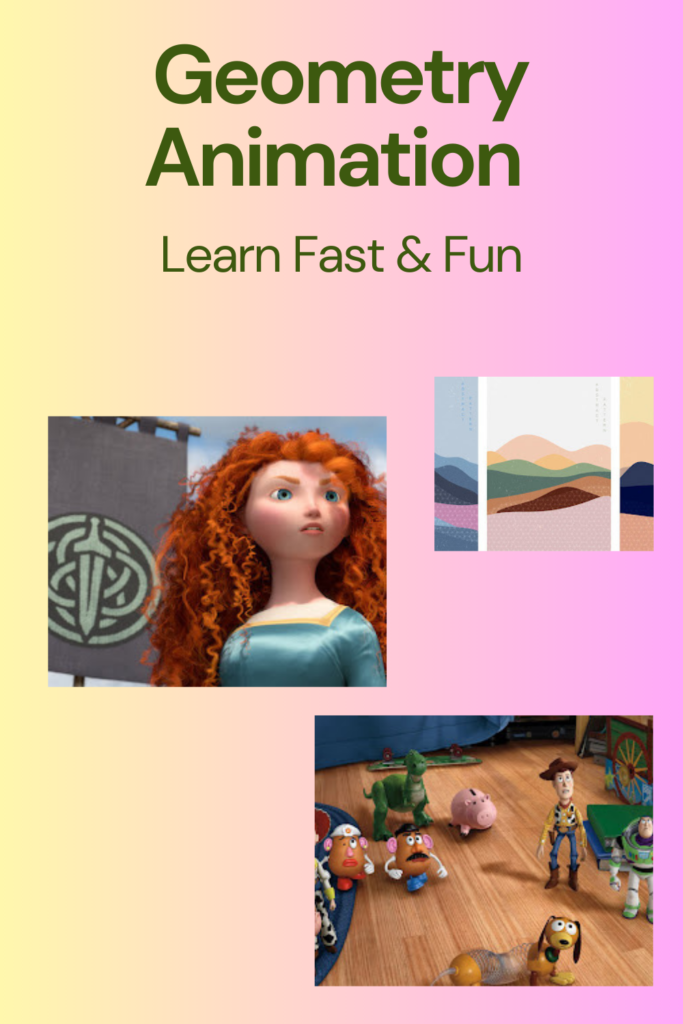
Geometry Animation Cool math art Learn math fast Math art Movies Geometry Animation


